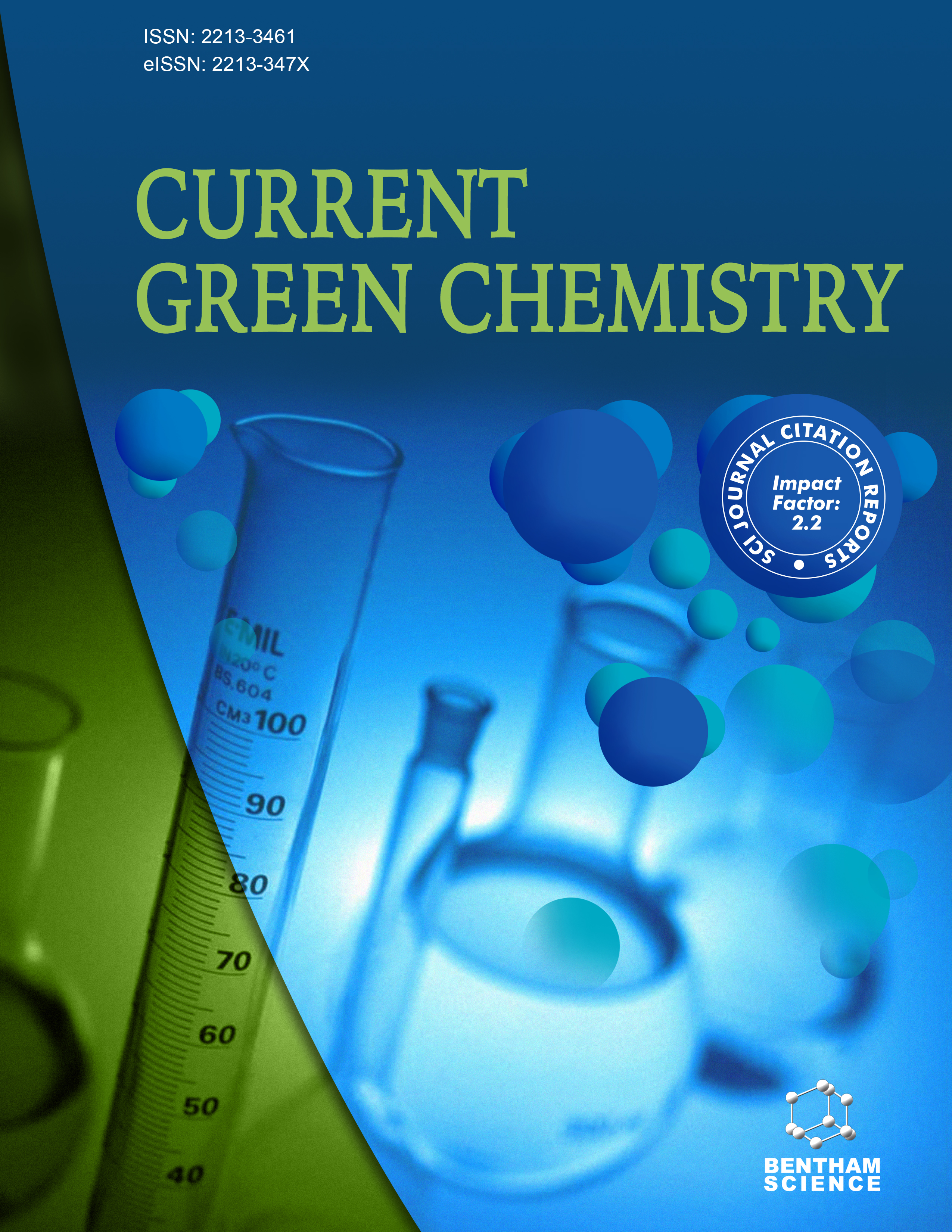- Home
- A-Z Publications
- Current Green Chemistry
- Previous Issues
- Volume 6, Issue 2, 2019
Current Green Chemistry - Volume 6, Issue 2, 2019
Volume 6, Issue 2, 2019
-
-
Carbonylation of Aryl Halides in the Presence of Heterogeneous Catalysts
More LessAuthors: Béla Urbán, Máté Papp and Rita Skoda-FöldesPalladium-catalyzed carbonylation in the presence of organic and organometallic nucleophiles serves as a powerful tool for the conversion of aryl/alkenyl halides or halide equivalents to carbonyl compounds and carboxylic acid derivatives. To circumvent the difficulties in product separation and recovery and reuse of the catalysts, associated with homogeneous reactions, supported counterparts of the homogeneous palladiu Read More
-
-
-
Green Bio-Based Solvents in C-C Cross-Coupling Reactions
More LessSolvent accounts for majority of the waste derived from synthetic transformations. This implies that by making changes to the solvent used by either switching to greener options, reducing the volume of solvent used, or even better avoiding the use of solvent totally will have a positive impact on the environment. Herein, the focus will be on the use of bio-based-green-solvents in C-C crosscoupling reactions highlighting t Read More
-
-
-
Synthesis of Propargylamines by Cross-Dehydrogenative Coupling
More LessPropargylamines are versatile compounds for heterocyclic synthesis, some of which are current drugs prescribed to treat patients with Parkinson’s disease. There are different methods to synthesize propargylamines, however, modern chemistry has moved progressively to rely on new strategies that meet the principles of Green Chemistry. In this context, propargylamines are readily accessible by the cross-dehydrogen Read More
-
-
-
Tetraethylammonium Fluoride-mediated A Green Hydrogen Transfer Process for Selective Reduction of Biomass-derived Aldehydes
More LessAuthors: Zhaozhuo Yu, Fusheng Xu, Yan Li, Hiroyuki Konno, Hu Li and Song YangHydrogenation of furfural (FUR) to furfuryl alcohol (FFA) is a key step and one of the representative examples for comprehensive utilization of biomass, while relatively harsh conditions are typically required to achieve satisfactory results using molecular hydrogen, formic acid, or alcohol as H-donor over expensive metal catalysts. In this work, a new and benign reaction system, composed of green and cheap tetraethylamm Read More
-
-
-
Catalytic Transformation of Bio-oil to Benzaldehyde and Benzoic Acid: An Approach for the Production of High-value Aromatic Bio-chemicals
More LessAuthors: Xiaoping Wu, Lijuan Zhu, Changhui Zhu, Chenguang Wang and Quanxin LiBenzaldehyde and benzoic acid are high-value aromatic chemicals and important intermediates in chemical industry, and the catalytic conversion of biomass-based sources to these aromatic chemicals is of great significance in both academic and industrial fields. This work demonstrated that bio-oil was directionally converted into benzaldehyde and benzoic acid by three-step process under atmospheric pressure and moderate Read More
-
-
-
Mild and Green Protocol for Selective Deuteration of Quercetin-3-O-Rutinoside (Rutin) Under Aqueous Basic Conditions
More LessAuthors: Anxhela Akolli, Silvia Moretti, Francesca Mangiavacchi, Bonifacio Monti and Claudio SantiA convenient and cost-effective method for selective deuteration of rutin using biologically compatible bases and D2O both as a deuterium source and a solvent is herein reported. The protocol is benign and inexpensive affording good results in very mild conditions allowing to reduce the required amount of deuterium oxide. The position of the C-H/C-D exchange and the level of deuteration can be conveniently followed by 1H-NMR.
-
Most Read This Month
Article
content/journals/cgc
Journal
10
5
false
en


